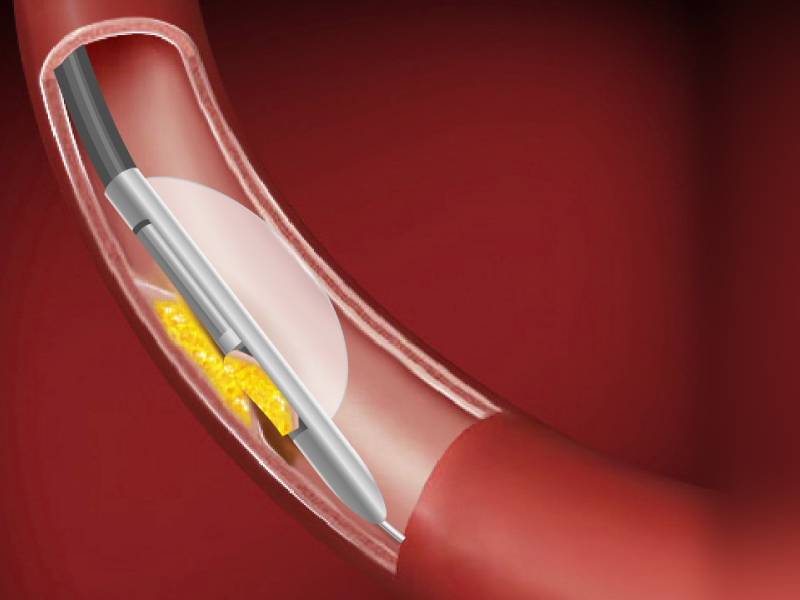Rotational Atherectomy is a therapy performed with a small rotating cutting blade that is used to open a blocked artery and revamp the flow of blood to or from the heart. Often a stent (a tiny tube composed of metal mesh) is inserted in the artery to keep it from re-narrowing.
Rotational atherectomy is done at Metro Hospital. The center is well off with 45 Intensive Coronary Care and High Dependency Units furnished with beds and modern state-of-the-art life support equipment operated by a skilled staff of cardiac anesthetists, intensivists, and competent nurses round-the-clock.

This procedure is useful in the treatment of coronary heart disease in patients with angina pectoris. Over time, plague, a fatty substance made up of cholesterol, calcium, and other materials tend to build up in the arteries. This leads to partial or complete chocking of that artery, resulting in either a heart attack, stroke, or obstructions in the blood vessels of the legs causing pain. If the plaque is soft enough, it can be easily dissolved by the intervention of a thin tube possessing a tiny balloon at its end. This apparatus is operated by an interventional cardiologist. After placing the tube into the artery, the balloon is opened to knock out the plaque and resurrect the artery to improve blood flow. This procedure is called angioplasty. But when the plaque is too hard to be pushed aside by angioplasty, rotablation or rotational atherectomy comes into play.
Build up of calcium in the artery walls for a prolonged period can cause the plague to become extremely rigid and hard. Sometimes, the plague becomes too hard and calcified for an angioplasty balloon to widen the artery open. To work out this problem, medical researchers created a small device known as a rotavator. One of its ends presents a burr coated in diamond dust and for this reason, it is also known as a diamond rotor. Once the drill head has been drawn into the concerned artery, the area is stretched using balloon angioplasty. In many cases, high-pressure balloons are employed for the stents to fully expand. Next comes the implantation of drug-eluting stents. These stents release a drug over time to keep blockage of the artery from recurring. This ensures satisfactory treatment results over the long term. The rotavator drills through the hardened plaque, breaking it up into tiny pieces as it operates. The body is then able to safely pick up these small pieces of plaque by the bloodstream and eventually eliminate them.
Dr. Kartik Bhosale provides the best treatment for various heart diseases in Pimpri-Chinchwad and Pune. For more information about our comprehensive treatment options, or to request an appointment with the best cardiologist in Pune call +918420070081 / +918420070082 or Click on Book Appointment for online booking with your near hospital.
WhatsApp us
